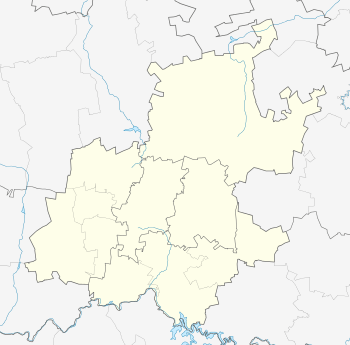Brixton, Gauteng
| Brixton | |
|---|---|
 Brixton  Brixton  Brixton
| |
|
Location within Greater Johannesburg  Brixton | |
| Coordinates: 26°11′S 28°0′E / 26.183°S 28.000°ECoordinates: 26°11′S 28°0′E / 26.183°S 28.000°E | |
| Country | South Africa |
| Province | Gauteng |
| Municipality | City of Johannesburg |
| Main Place | Johannesburg |
| Area[1] | |
| • Total | 0.56 km2 (0.22 sq mi) |
| Population (2011)[1] | |
| • Total | 4,067 |
| • Density | 7,300/km2 (19,000/sq mi) |
| Racial makeup (2011)[1] | |
| • Black African | 75.2% |
| • Coloured | 7.5% |
| • Indian/Asian | 6.7% |
| • White | 9.2% |
| • Other | 1.4% |
| First languages (2011)[1] | |
| • English | 26.4% |
| • Zulu | 12.8% |
| • Tswana | 12.8% |
| • Afrikaans | 10.0% |
| • Other | 38.0% |
| Postal code (street) | 2092 |
| PO box | 2019 |

Brixton is a predominantly working class suburb of Johannesburg, South Africa. It is the site of the landmark Sentech Tower, and is near the suburbs of Auckland Park and Melville.
History
The suburb of Brixton was first surveyed in 1902 from a portion of the farm Braamfontein.
The suburb was named after the Brixton suburb in London with many of the area's streets taking their names from districts in the British capital. The ridge on which the area was developed in the early 20th century offers a panoramic view of most surrounding areas of Johannesburg. Brixton consists of wide, neat streets containing some 980 houses, many of which are traditional semi-detached homes with low set walls.
Architecture
The suburb possesses several distinctive churches, with one having been built by Sir Herbert Baker and Frank Fleming. Several Brixton houses have been declared provincial heritage sites.
The area also features one of the largest cemeteries in Johannesburg. Laid out in 1912, Brixton Cemetery has a historic Hindu crematorium which was organised by Mahatma Gandhi shortly before his departure from South Africa in 1914.
The commanding Sentech Tower overlooks the area. Built in 1962, the tower is used for broadcasting television and radio stations across the country. The tower once featured a restaurant at its top, but this was closed in 1982 due to political tensions.
Kingston Frost Park
The area is also home to the Kingston Frost Park. Originally called the Brixton Park when it was laid out in 1925, the park was renamed the Kingston Frost Park in 1939 in honor of the Johannesburg city councillor, AC Kingston Frost. Visitors to the park are greeted with a tall beacon commemorating those who died in World War I.
Gentrification
The image of the Brixton Central Business District is still perceived as negative. The area's disheveled High Street stores still lack business investors and parking and entertainment venues remain scarce.
Brixton has traditionally been a working class suburb, but has seen an influx of professionals in recent years. The area's low property prices, heritage filled streets and the ridge's panoramic views have attracted new residents to the area. There is also a large, ever growing student population which attend the nearby University of the Witwatersrand and University of Johannesburg.
References
Brixton, the Caring Suburb[2] The city's history[3]
- 1 2 3 4 "Sub Place Brixton". Census 2011.
- ↑ http://www.joburg.org.za/index.php?option=com_content&view=article&id=6682:brixton-the-caring-suburb&catid=106:suburbs&Itemid=188
- ↑ http://www.joburg.org.za/index.php?option=com_content&view=article&id=246:brixton-cemetery-hosts-citys-history&catid=38&Itemid=51